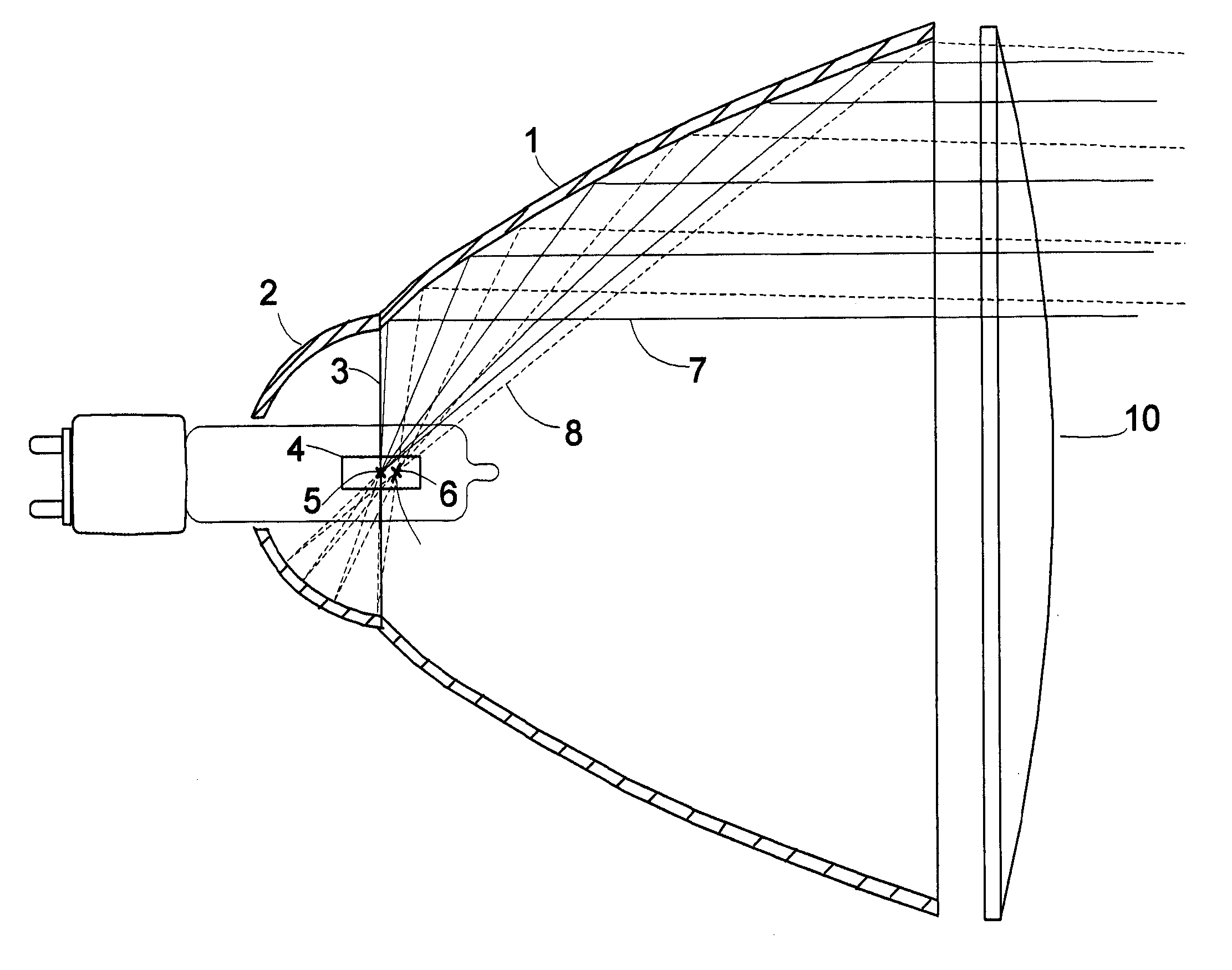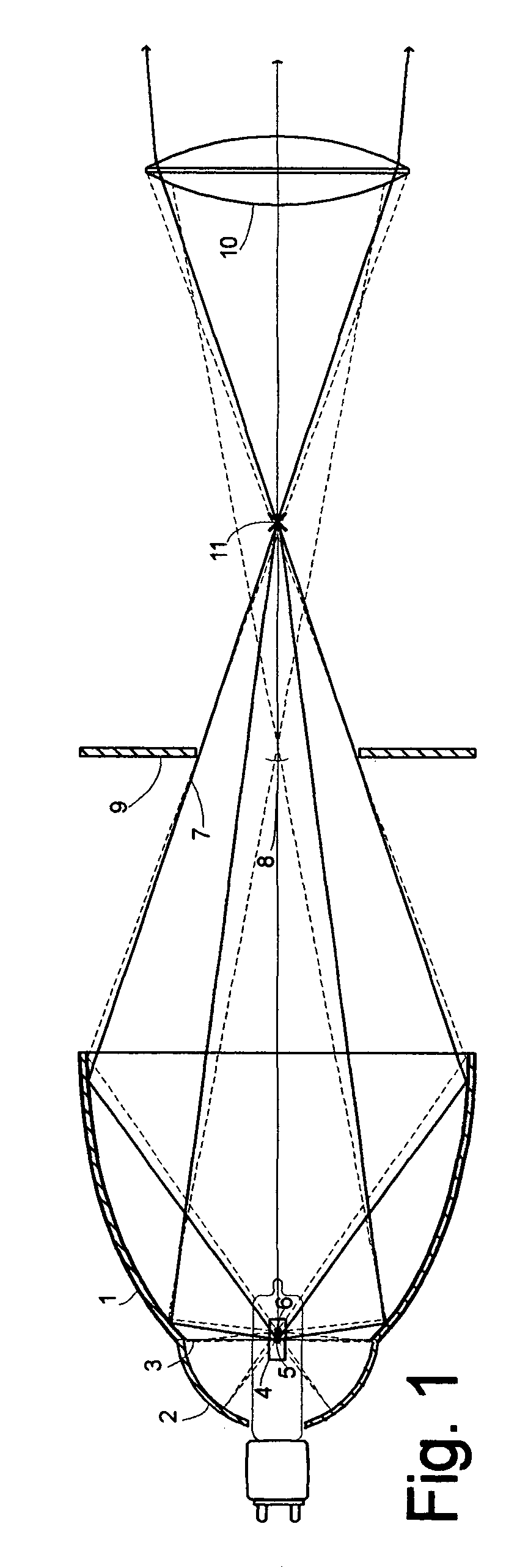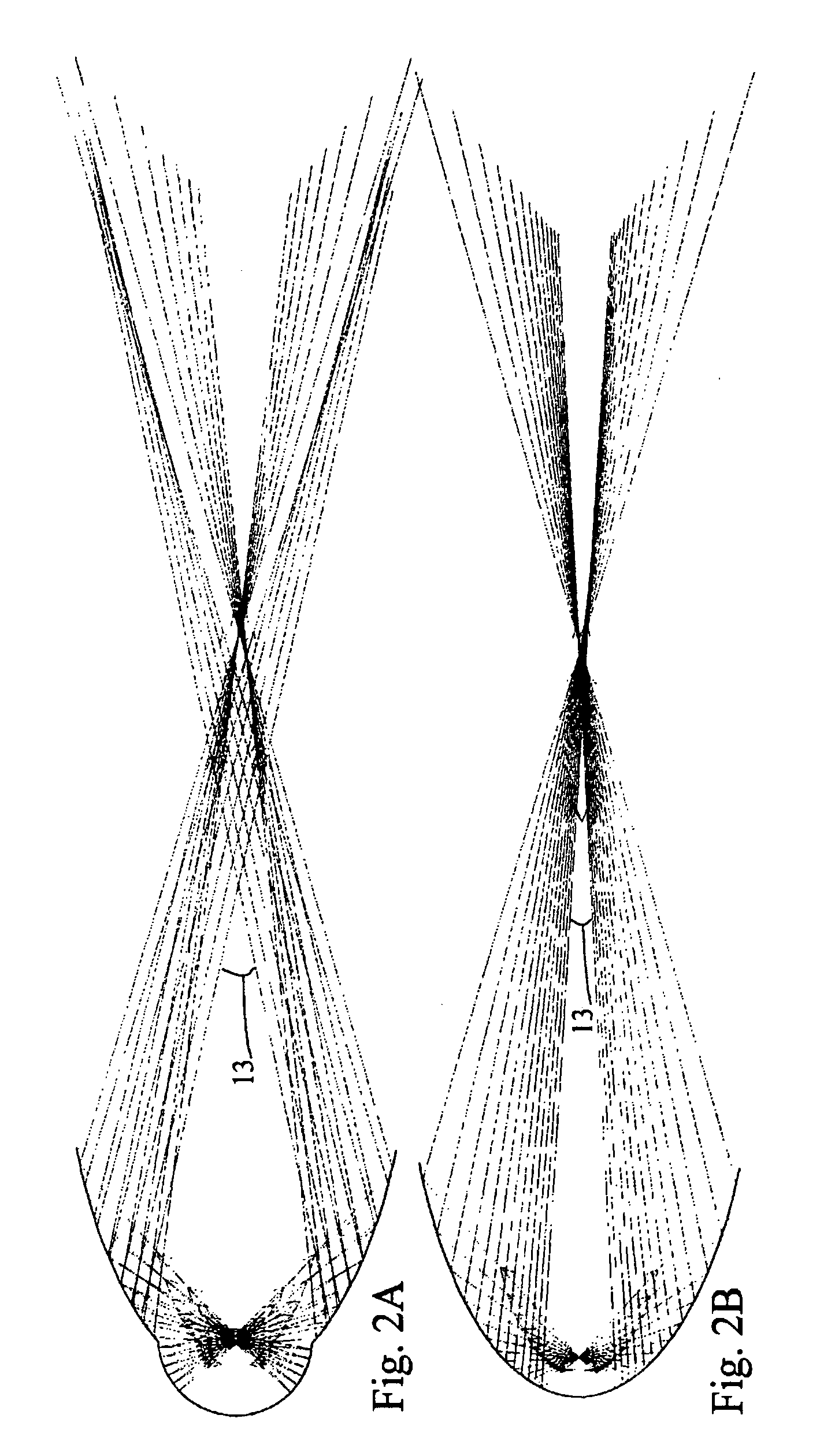Heat distributing hybrid reflector lamp or illumination system
a hybrid reflector and reflector technology, applied in the field of reflector lamps, can solve the problems of increasing the depth of the reflector, increasing the cost, weight and awkwardness of use, and complicating the positioning of the light source in the reflector system, so as to improve the optical efficiency, reduce the concentration of heat, and improve the effect of optical efficiency
- Summary
- Abstract
- Description
- Claims
- Application Information
AI Technical Summary
Benefits of technology
Problems solved by technology
Method used
Image
Examples
Embodiment Construction
[0023]Reference will now be made in detail to the present preferred embodiment of the invention, examples of which are illustrated by the accompanying drawings. While the invention will be described in connection with a preferred embodiment, it will be understood that it is not intended to limit the invention to that embodiment.
[0024]FIG. 1 is a schematic diagram of a first embodiment of an incandescent illumination system in accordance with the invention. The reflector has an ellipsoidal front section 1 and a spherical rear section 2. The front and rear reflector sections are joined together near the intersection of a plane 3 passing through one of the foci 5 of the ellipsoidal front reflector section and just behind the focal point of the spherical rear reflector section 6. The focal point of the front reflector section is the approximate center point of the finite light source 4. The focal point of the rear spherical reflector section 6 is just forward of the focal point of the f...
PUM
 Login to View More
Login to View More Abstract
Description
Claims
Application Information
 Login to View More
Login to View More - R&D
- Intellectual Property
- Life Sciences
- Materials
- Tech Scout
- Unparalleled Data Quality
- Higher Quality Content
- 60% Fewer Hallucinations
Browse by: Latest US Patents, China's latest patents, Technical Efficacy Thesaurus, Application Domain, Technology Topic, Popular Technical Reports.
© 2025 PatSnap. All rights reserved.Legal|Privacy policy|Modern Slavery Act Transparency Statement|Sitemap|About US| Contact US: help@patsnap.com



